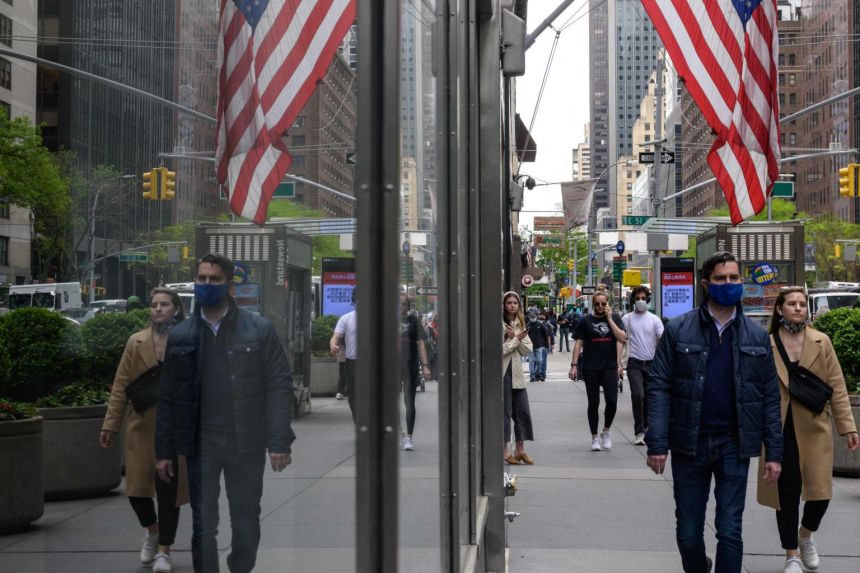Delta takes a toll on US job growth
Over the past weeks, many economists have wondered about the degree to which the rise of the Delta variant has adversely affected the US economy.

In August, only 235,000 new jobs were created in US.
We learned that the Delta variant’s impact was substantial. In August, employment growth decelerated dramatically from the previous month, with employment in the leisure and hospitality sector remaining unchanged after several months of blistering growth. It was in August that the Delta variant took a significant toll, with the number of daily infections rising from 79,300 on August 1 to 165,000 on September 1. The number of deaths increased from 360 on August 1 to 1,403 on September 1. The number of people hospitalized with COVID-19 doubled during August.
This dramatic surge in the outbreak, which was disproportionately concentrated in southern states, did not lead to significant changes in regulations governing social interaction. Instead, it evidently scared enough people to have a voluntary impact on social interaction and on the willingness of consumer-facing businesses to hire. High-frequency data shows that certain types of economic activity have begun to decelerate. For example, the number of people passing through airport security checkpoints has fallen as a share of the 2019 volume. The number of people making online reservations to dine at restaurants, after having risen sharply, has been declining since mid-July relative to the 2019 numbers. Finally, since July, the volume of gasoline supplied to the market has fallen as a share of the volume in 2019. In other words, data that reflects the willingness of individuals to engage in social interaction or to travel, after having recovered strongly in recent months, is now going in a negative direction. Last week’s employment report demonstrates how public health events can influence economic activity.
The US government releases two monthly reports on employment. One is based on a survey of establishments, the other based on a survey of households. The establishment survey found that, in August, 235,000 new jobs were created. This contrasts with the revised increase in July of 1,053,000 jobs. Job growth was slower than even the lower range of forecasts from Wall Street economists. Interestingly, there was a strong 37,000 increase in employment in the manufacturing sector, which included a 24,100 increase in employment in the automotive sector. There was also a strong 74,000 increase in employment in professional and business services.
The problem in August, however, was largely in consumer-facing services. After having risen 289,600 in July, employment in restaurants declined 41,500 in August. As for employment at hotels, after rising 73,000 in July, it increased only 6,600 in August. In addition, employment in retailing continued to contract, falling 28,500 in August. Overall, employment in August remained 3.5%, or roughly 5 million, below the prepandemic level of February 2020. The establishment survey also found that average hourly wages were up 0.6% from the previous month and up 4.3% from a year earlier. While high, this is still lower than annual inflation. Thus, in real (inflation-adjusted) terms, wages are actually declining. This suggests that, despite a labor shortage, workers are not exerting much leverage.
The separate survey of households offered a more positive take on the labor market. That survey includes the impact of self-employment. It found that employment grew much faster than the labor force, thereby leading to a decline in the unemployment rate from 5.4% in July to 5.2% in August. The labor force participation rate remained unchanged. However, the size of the labor force (those employed or actively seeking employment) was down 1.8% in August from the prepandemic level. Interestingly, while the overall unemployment rate dropped, unemployment among teenagers increased substantially, likely a reflection of the loss of jobs in low-paying consumer-facing services.
The employment report could lead the Federal Reserve to alter its plans. Recall that Fed Chair Powell recently said that the Fed will likely start to taper its program of asset purchases before the end of the year. That decision was based on the assumption that the economy is moving steadily toward maximum employment. Yet the August employment report means that the transition to maximum employment is slowing. The big question is whether the Delta variant will continue to disrupt the job market in the months to come. That will depend, in part, on how quickly people get vaccinated and whether they engage in social distancing and wear masks. These factors will determine the nature of the outbreak. If the outbreak abates, it will likely have a positive impact on employment growth—and vice versa. Meanwhile, the Biden administration is likely to argue that the weak employment report justifies the need for more spending on infrastructure and other programs.








